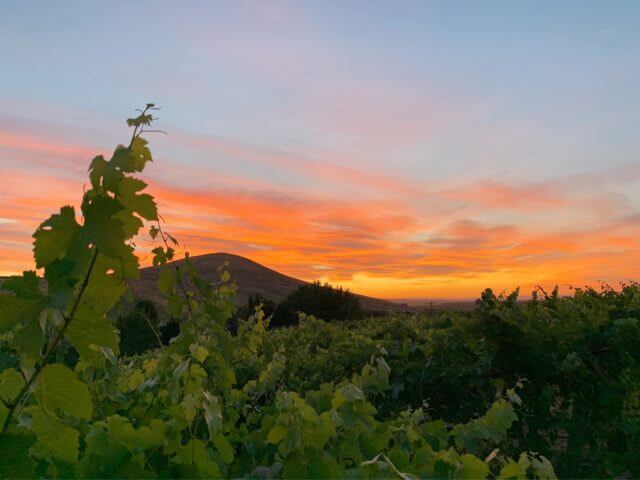“Candy Mountain is small but mighty,” said Steve Warner, president of the Washington State Wine Commission.
“The region has been growing highly regarded grapes for years, so it will be great to finally see the AVA-designated wines out in the world.”
At 815 acres, Candy Mountain is the smallest AVA in Washington. It sits to the southeast of Red Mountain and is within the Yakima Valley AVA and the larger Columbia Valley AVA. As part of the proposal, TTB also expanded the boundary of the existing Yakima Valley AVA by 72 acres, to fully encompass the Candy Mountain AVA.
Candy Mountain is part of a chain of four mountains in the area, which also include Red Mountain, Badger Mountain, and Little Badger Mountain. It has a number of similarities to Red Mountain, including a warm climate and higher winds relative to the surrounding area. According to Kevin Pogue PhD, who wrote the AVA petition for Candy Mountain, its distinct characteristics include:
- The AVA is located on an isolated mountain with excellent cold air drainage that rises above lower elevation plains.
- A very large percentage of the AVA faces to the south, enhancing solar radiation and allowing the soils to warm quickly in the spring.
The soils, especially on the upper slopes, are shallower than those of the surrounding plains, allowing vine roots to penetrate to the underlying basalt bedrock or ice age flood deposits.
The soils of Candy Mountain are composed of wind-deposited silt and sand that overlies silt, sand, and gravel deposited by ice age floods on the lower slopes of the mountain, and basalt bedrock on the upper slopes. There are currently 110 acres of vineyards planted in the AVA, and almost all are red varieties.
“The fruit from Candy Mountain is highly regarded,” Pogue said. “There’s new acreage going in right now and I think it has the potential to be one of the most visible AVAs in Washington. Winemakers who have used the fruit are very impressed with the quality.”
Candy Mountain comes on the heels of Washington’s Royal Slope AVA, which was published on September 2. To qualify as an AVA, a wine grape-growing region must be distinguishable by features such as climate, soil, elevation and physical features. One month after the final rule is published, wineries may submit a Certificate of Label Approval (COLA) request to TTB for a label using the AVA name as an appellation of origin.
“The process to establish a new AVA takes years, so we’re excited to see these two come to fruition,” Warner said.
“There are several more AVAs currently under petition to be approved in the coming years, which is another positive sign of our long-term continued growth. With 1,000 wineries, 60,000 acres of vineyards and now 16 AVAs, we’re still only just getting started.”



![Netflix’s Bold Bet on ‘Just A Dash’ Sparks Buzz: Why Matty Matheson’s Wild Cooking Show Is the Flavor Ride LA Craves [TRAILER] Netflix brings Matty Matheson Just A Dash to global audiences](https://dailyovation.com/wp-content/uploads/2025/12/Screenshot-2025-12-09-at-2.10.32-PM-218x150.jpg)





![The Rise of Wisconsin Rye Whiskey: A Flavorful Story of Community and Craft [Exclusive Interview with John Mleziva] Explore the rise of Wisconsin rye whiskey, its Driftless flavor, and the community-driven craft behind State Line Distillery’s celebrated five-year release.](https://dailyovation.com/wp-content/uploads/2025/12/Screenshot-2025-12-02-at-8.44.22-PM-218x150.jpg)










![Get Your Indie Movie Made (Responsibly): Jeff Caruso of Wrapbook Leads the AFM 2025 Film Finance Conversation [Exclusive Interview] American Film Market](https://dailyovation.com/wp-content/uploads/2025/11/AmericanFilmMarket2025-1-218x150.jpg)












